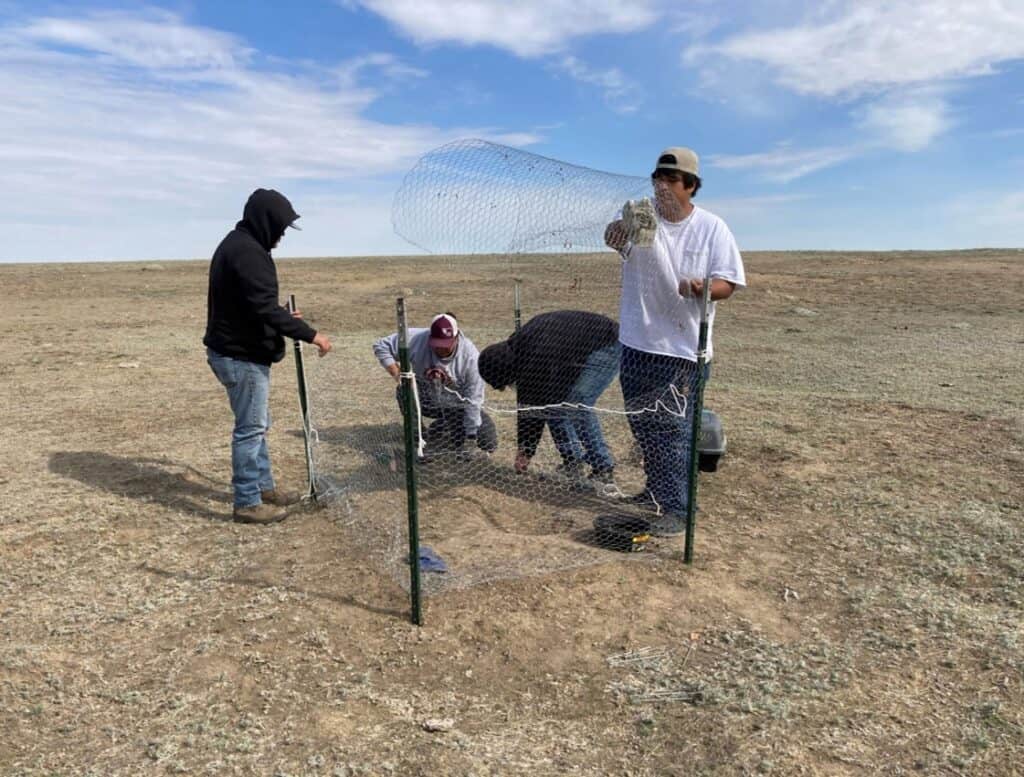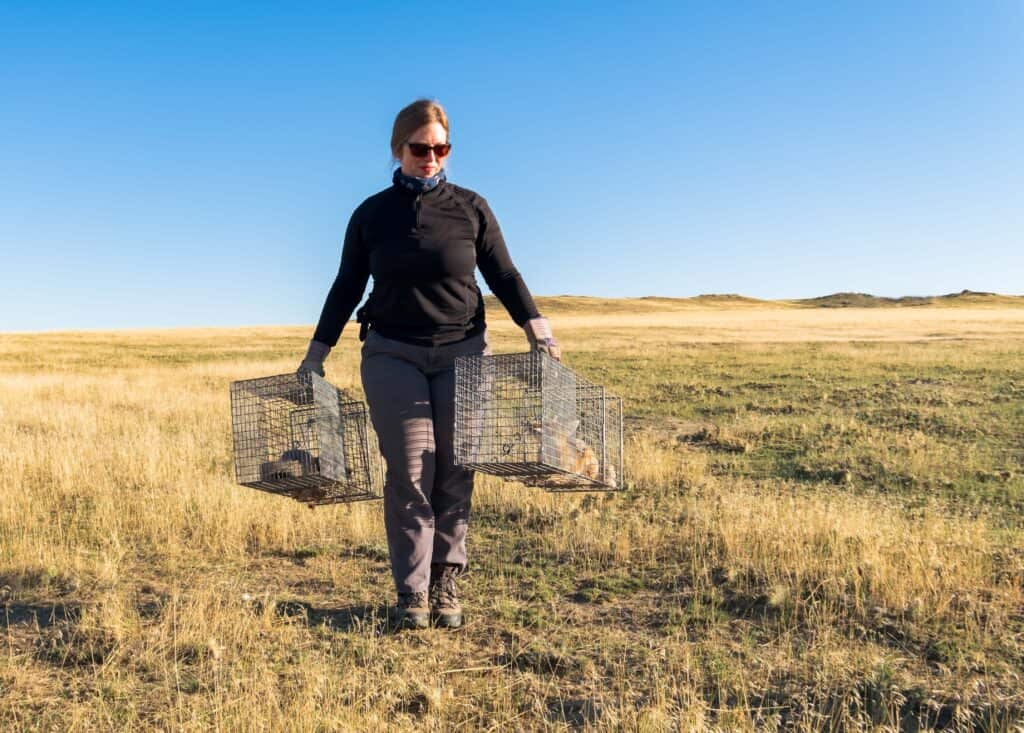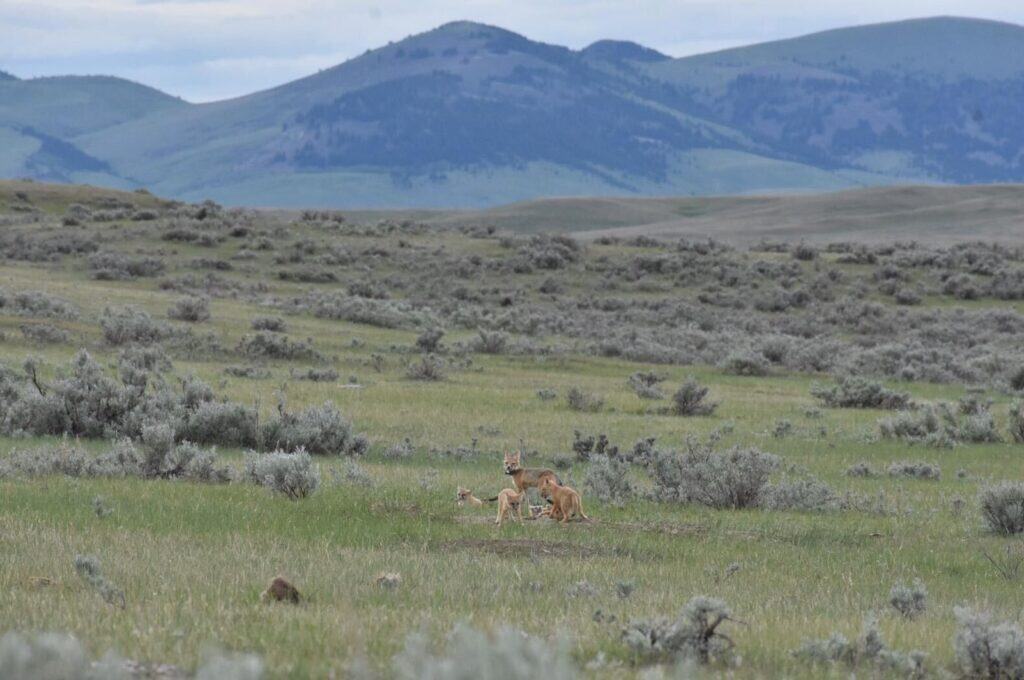Fort Belknap population sits between established populations in Canada and Wyoming
Swift foxes reintroduced to Tribal land in Montana are adapting to their new homes after a program intended to connect populations to the north and south began.
“Swift foxes are numerically the most reintroduced canids in the world, so we’ve learned a lot about how to do it,” said Dana Nelson, a PhD candidate in wildlife and fisheries biology at Clemson University in South Carolina and a fellow with Smithsonian’s National Zoo and Conservation Biology Institute.
Swift foxes (Vulpes velox) were once common in western states and provinces in North America. But landscape changes and predator control programs in the late 1800s decimated their populations in many parts of their former range. By the early 1900s, the foxes were found only in about 10% of their former distribution, mostly in scattered pockets in the southern part of their range in Wyoming, Colorado, New Mexico and Texas. Protection in Canada under the Species at Risk Act and conservation action in the U.S. resulted in a partial recovery—swift fox populations now make up 40% of their former distribution, but many patches without the canids remain.
While populations of the species became established in parts of southern Alberta, Saskatchewan and northern Montana, there was still a roughly 200-mile gap in distribution between those areas and other swift fox strongholds in southern Montana and Wyoming.

Fort Belknap Indian Reservation, home to the Assiniboine (Nakoda) and Gros Ventre (Aaniiih) Tribes, sits right in the middle of this blank spot. From 2020 to 2024, the Tribes partnered with the Smithsonian National Zoo and Conservation Biology Institute to reintroduce 139 foxes to Fort Belknap, taken from four total source populations in Colorado and Wyoming. Managers put the animals in pens for a soft release into grasslands. Wildlife managers fitted some of these animals with GPS collars after release to track their movements.

Finding new fox holes
In a study published recently in Restoration Ecology, lead author Nelson and her colleagues analyzed how well 46 reintroduced foxes, whose collars had good data, fared after release from 2020 to 2023.
Their study examined adult and juvenile movement patterns for the first 100 days after release. “That’s a pretty critical period,” Nelson said, as reintroduced individuals are more vulnerable to predation and other threats when unfamiliar with their new home range.

They found that of the 46 animals they tracked, 35 individuals—76%—settled into a stable home range. The remaining 11 kept moving for the roughly three-month period, perhaps searching for unoccupied territory or for a mate. Some of those movements were pretty dramatic, with foxes traveling all the way from Fort Belknap to Canada after release. Others crossed the Missouri River Breaks southwest of Fort Belknap. But the average distance from the release point to their new home ranges was about 19 kilometers.
While this study only examined foxes that survived for the first 100 days, Nelson said that 22 foxes of the 121 released from 2020 to 2023 died in the first 100 days, which is a fairly small number of casualties for a project like this. Other reintroduced foxes have also successfully reproduced in their new home ranges in Fort Belknap.
Nelson believes that the fox reintroduction has been successful so far for a couple of reasons. One is that the Fort Belknap region has the kind of ecosystem that the foxes need—plenty of flat areas with native intact grasslands and soil good for digging and denning. It’s also quite suitable for black-tailed prairie dogs (Cynomys ludovicianus), a prey species for swift foxes.

Finally, the project was effective due to the volume of research on the topic and previous translocation experiences. “Because swift foxes have been reintroduced and studied in the numbers and intensity that they have, this is a case where we have improved reintroduction techniques and protocols over time,” Nelson said.
The Fort Belknap Indian Reservation is currently the only area where three keystone western species coexist: the plains bison (Bison bison), the black-footed ferret (Cynomys ludovicianus) and now the swift fox.





